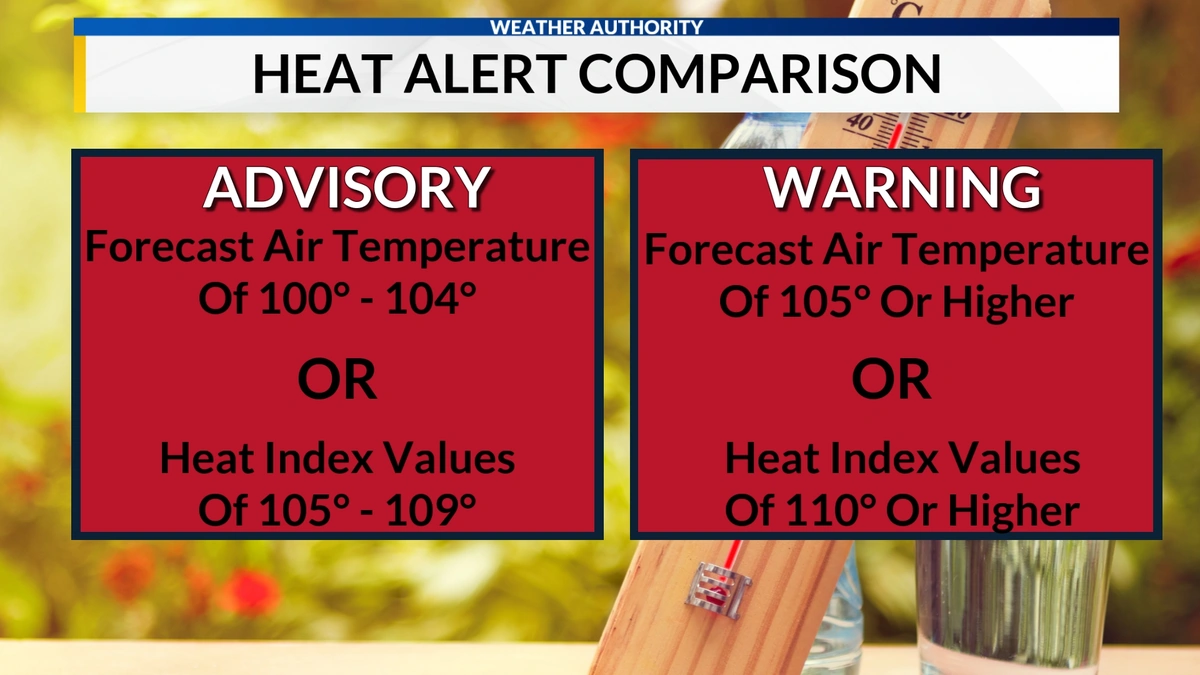Okay, so you’ve heard there’s a heat advisory . Big deal, right? It gets hot every summer. But here’s the thing: a heat advisory isn’t just a suggestion to drink more water (though you should!). It’s a signal that conditions are brewing that could be genuinely dangerous – especially if you’re not prepared. Let’s break down what’s really going on, why it matters, and how to keep yourself and your loved ones safe. This isn’t just about feeling a little sweaty; it’s about understanding the potential for serious health risks.
What Exactly Is a Heat Advisory? Decoding the Jargon

Let’s be honest, the official definitions can be a bit vague. Basically, a heat advisory is issued when the combination of high temperatures and humidity is expected to make it feel like it’s 100-105°F (38-41°C) for at least two consecutive hours. That “feels like” part? That’s the heat index , and it’s crucial. It takes into account how humidity impairs your body’s ability to cool itself through sweating. The National Weather Service (weather.gov ) is the authority here, and they use sophisticated models to predict when these conditions will occur. You can check weather Boston for updates. I initially thought understanding a heat warning would be straightforward, but the interplay of factors is more nuanced than it appears. It’s not just the temperature; it’s the whole package.
The “Why” | Why a Heat Advisory Should Actually Worry You
So, why should you care about a heat advisory more than just grumbling about the weather? Because prolonged exposure to high heat and humidity can lead to heat exhaustion, heat stroke, and even death. And it’s not just the elderly or those with pre-existing conditions who are at risk. Anyone can be affected, especially if they’re engaging in strenuous activity outdoors. A common mistake I see people make is underestimating the power of the sun and humidity combined. The dangers of extreme heat are real, and they can sneak up on you quickly. Cooling centers are opened to help people in these situations. What fascinates me is how quickly a seemingly normal day can turn dangerous when these factors align.
Think about it: your body is constantly working to maintain a stable internal temperature. When it’s hot and humid, that process becomes much more difficult. Your heart has to work harder to pump blood to the surface of your skin to cool you down. You sweat more, which can lead to dehydration and electrolyte imbalances. If your body can’t keep up, things can go south very quickly. This is particularly relevant if you live in areas that aren’t used to these extreme conditions; your body hasn’t acclimated. Plus, with excessive heat warnings becoming more frequent, it’s something we all need to be more aware of. I think about this from the perspective of someone who enjoys outdoor activities – the risks are definitely amplified.
The “How” | Practical Steps to Beat the Heat
Okay, enough doom and gloom. Let’s talk about what you can actually do to stay safe during a heat advisory . This isn’t rocket science, but it does require a little bit of planning and common sense. First and foremost: stay hydrated. Drink plenty of water throughout the day, even if you don’t feel thirsty. Avoid sugary drinks and alcohol, which can actually dehydrate you. Electrolyte drinks can also be helpful, especially if you’re sweating a lot.
Next up: limit your outdoor activity. If you have to be outside, try to schedule it for the coolest parts of the day – early morning or late evening. Wear loose-fitting, light-colored clothing, and a wide-brimmed hat. And don’t forget the sunscreen! A sunburn can make it even harder for your body to regulate its temperature. Here’s the thing: even short periods of exposure can be risky. Take frequent breaks in the shade or in air conditioning. And remember to check on vulnerable neighbors, friends, and family. A simple phone call can make a huge difference. Now, let’s look at Tampa weather
Recognizing the Signs | Heat Exhaustion vs. Heat Stroke
Knowing the difference between heat exhaustion and heat stroke could save a life. Heat exhaustion symptoms include heavy sweating, weakness, dizziness, headache, nausea, and muscle cramps. If you experience these symptoms, get to a cool place, drink water, and rest. Heat stroke , on the other hand, is a medical emergency. Symptoms include a high body temperature (104°F or higher), confusion, seizures, and loss of consciousness. If you suspect someone is having a heat stroke, call 911 immediately and try to cool them down while waiting for help.
Let me rephrase that for clarity: heat stroke is when your body’s cooling system completely breaks down. It’s not just feeling a little under the weather; it’s a life-threatening situation. Don’t hesitate to seek medical attention if you’re concerned. Sometimes people assume it is just summer heat safety but ignore the signs.
FAQ | Your Burning Questions Answered
What if I don’t have air conditioning?
Seek out public cooling centers, libraries, or shopping malls. Even a few hours in air conditioning can provide significant relief.
Is it safe to exercise during a heat advisory?
It’s best to avoid strenuous exercise during the hottest parts of the day. If you must exercise, do it early in the morning or late in the evening and take frequent breaks.
What are the best drinks to stay hydrated?
Water is the best choice. Electrolyte drinks can also be helpful, but avoid sugary drinks and alcohol.
How can I protect my pets during a heat advisory?
Make sure your pets have access to plenty of water and shade. Avoid walking them on hot pavement, and never leave them in a parked car.
Ultimately, dealing with a heat advisory isn’t just about surviving; it’s about being proactive and protecting yourself and others. So, stay informed, stay cool, and stay safe. And remember, a little bit of preparation can go a long way when the mercury rises.




